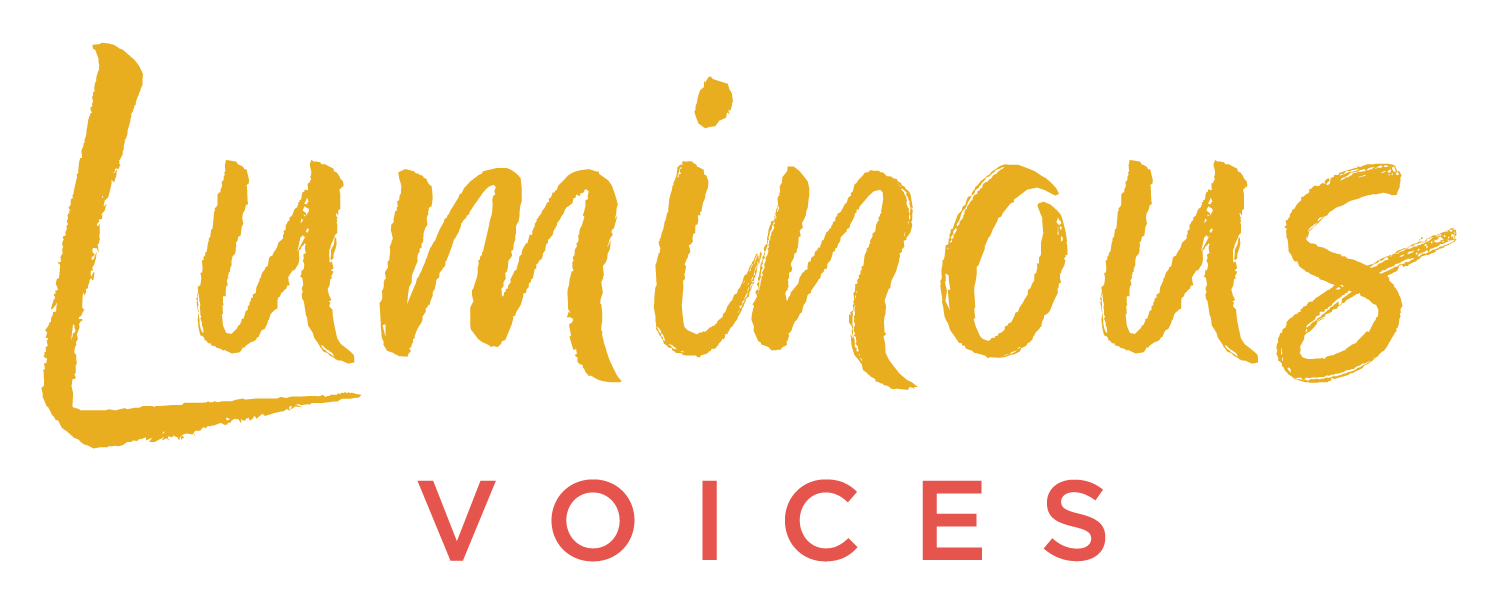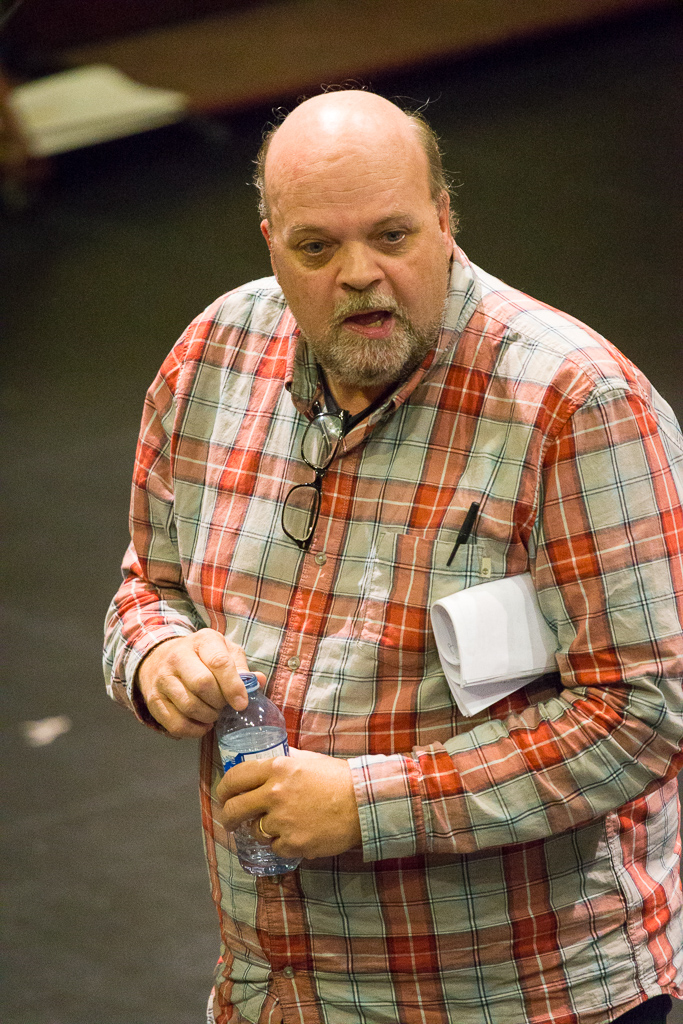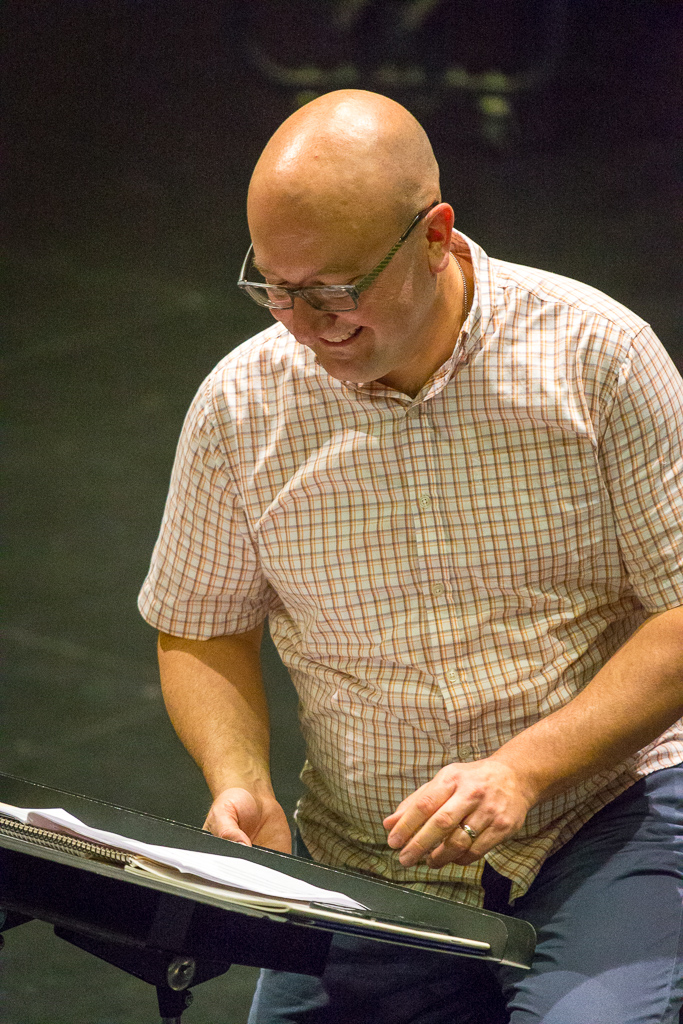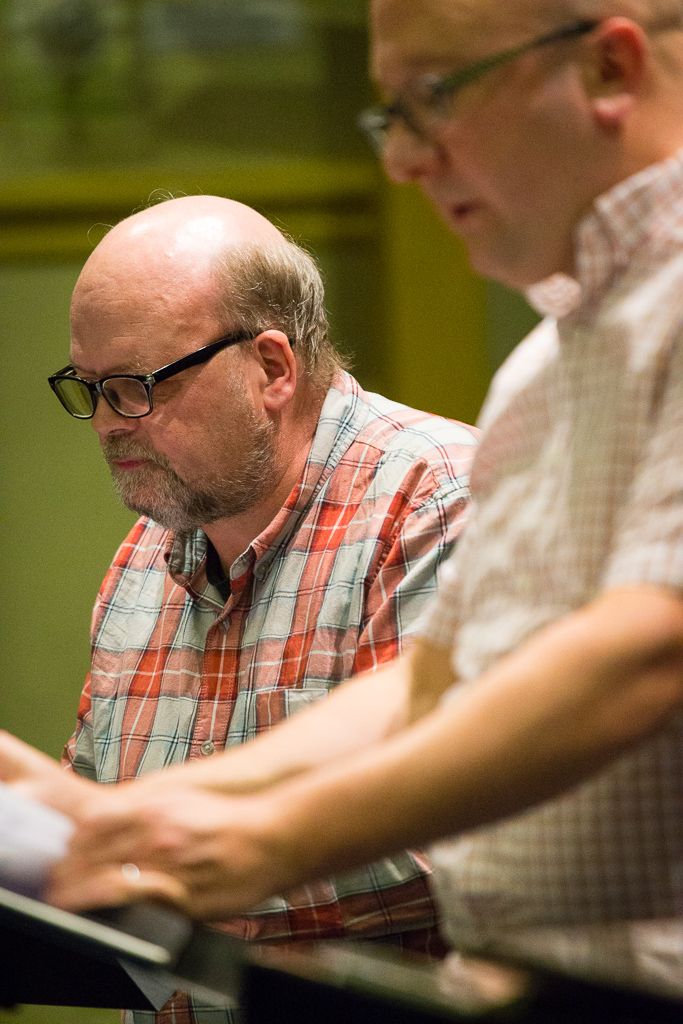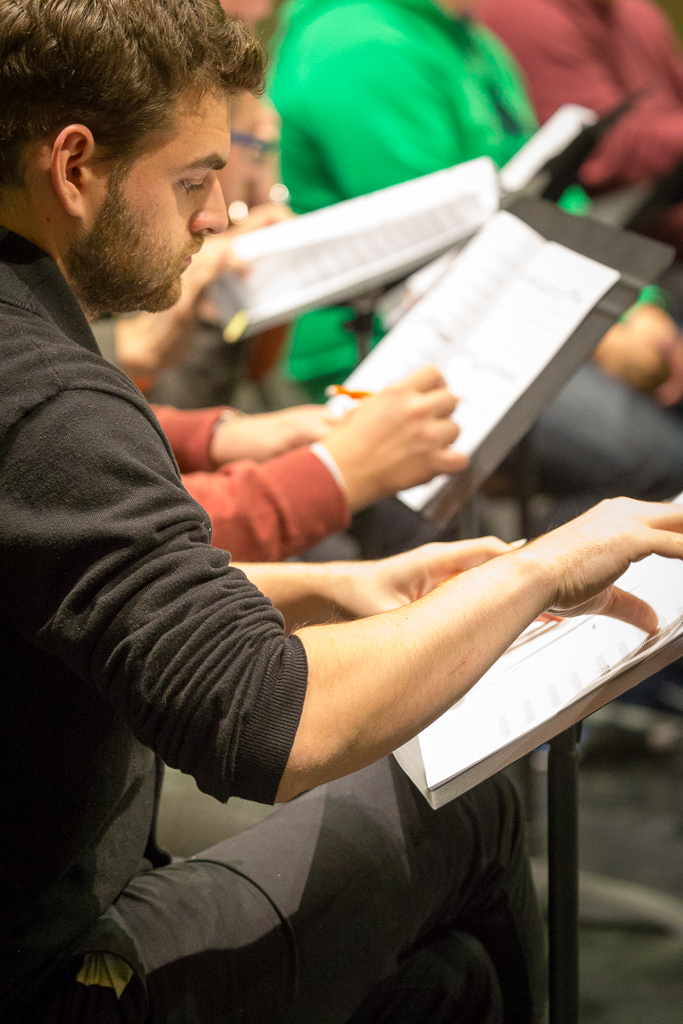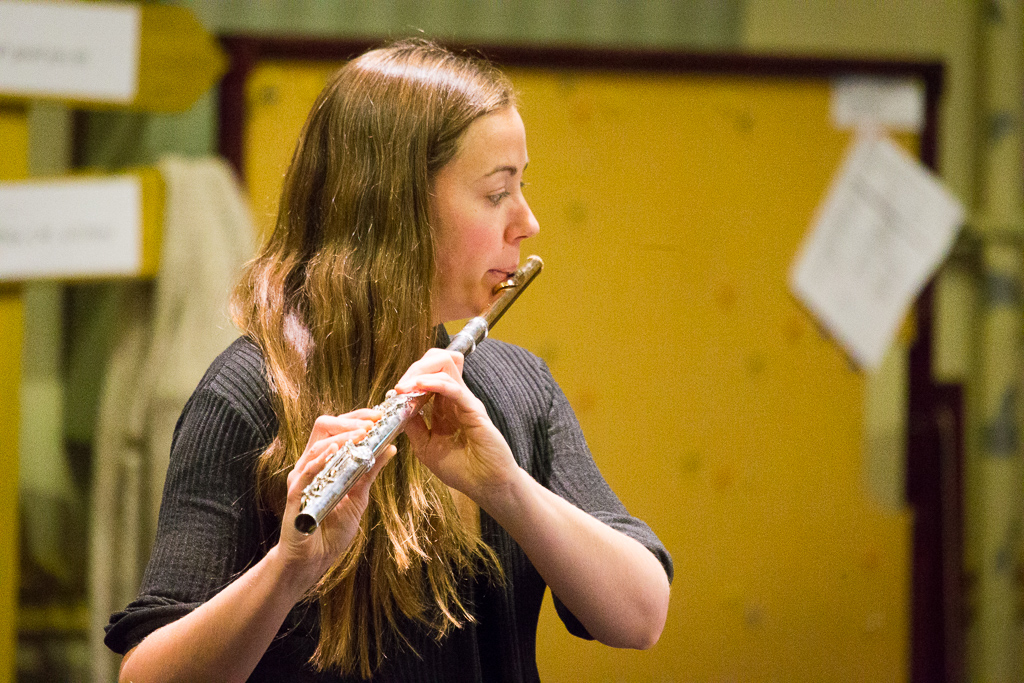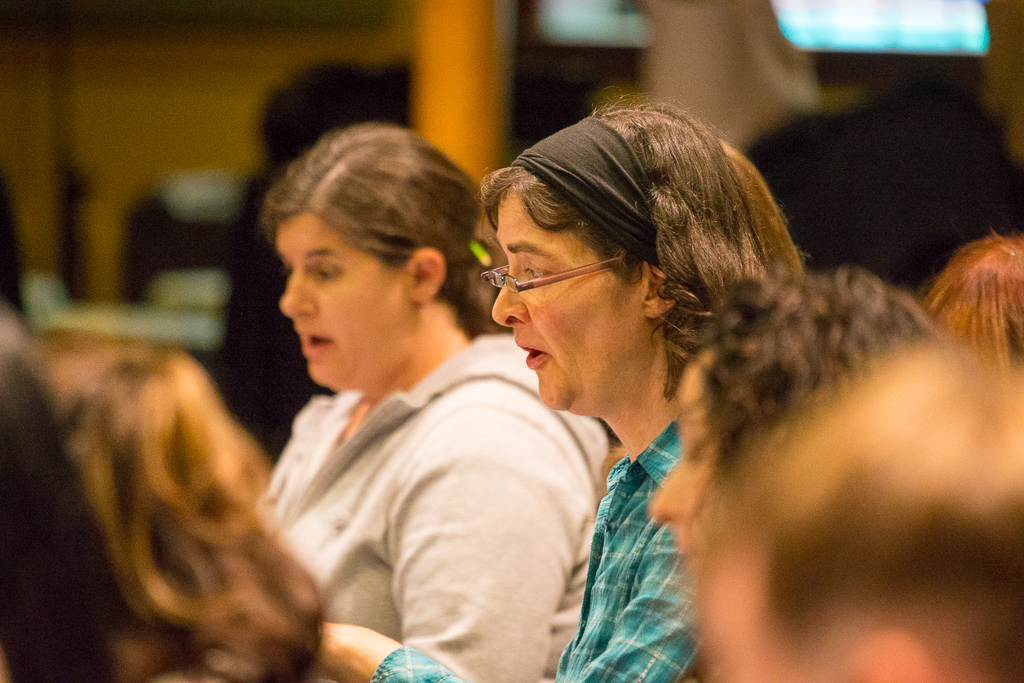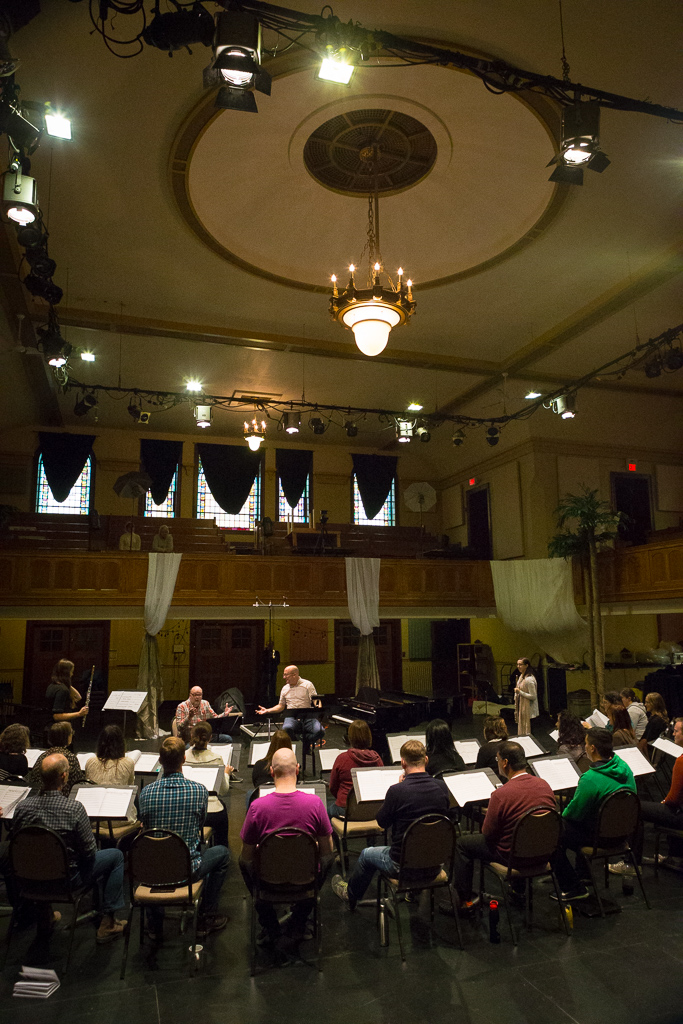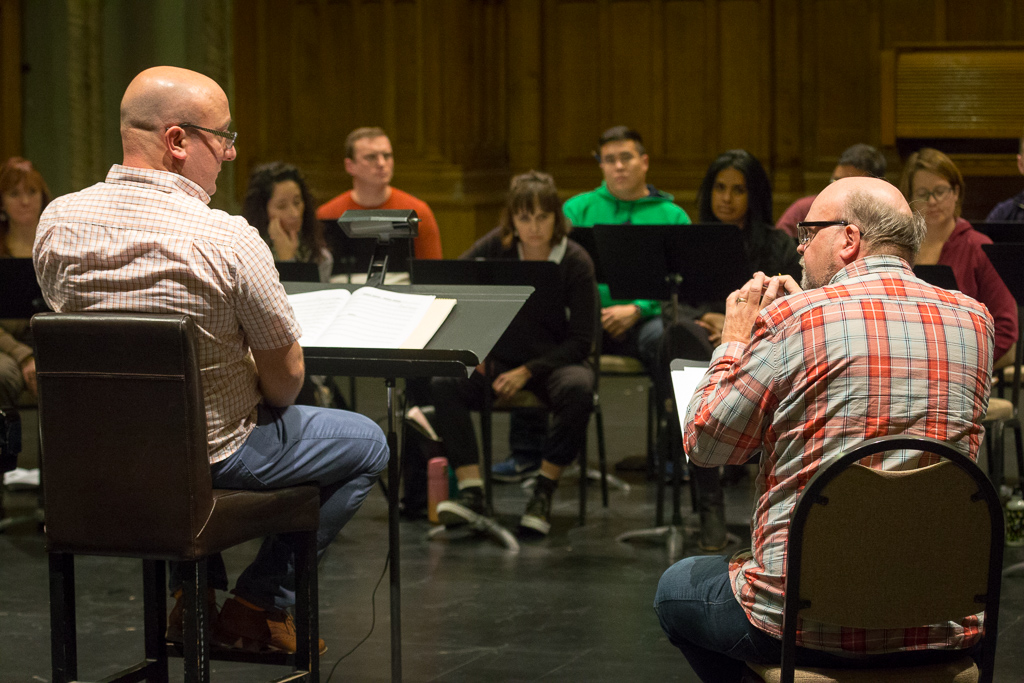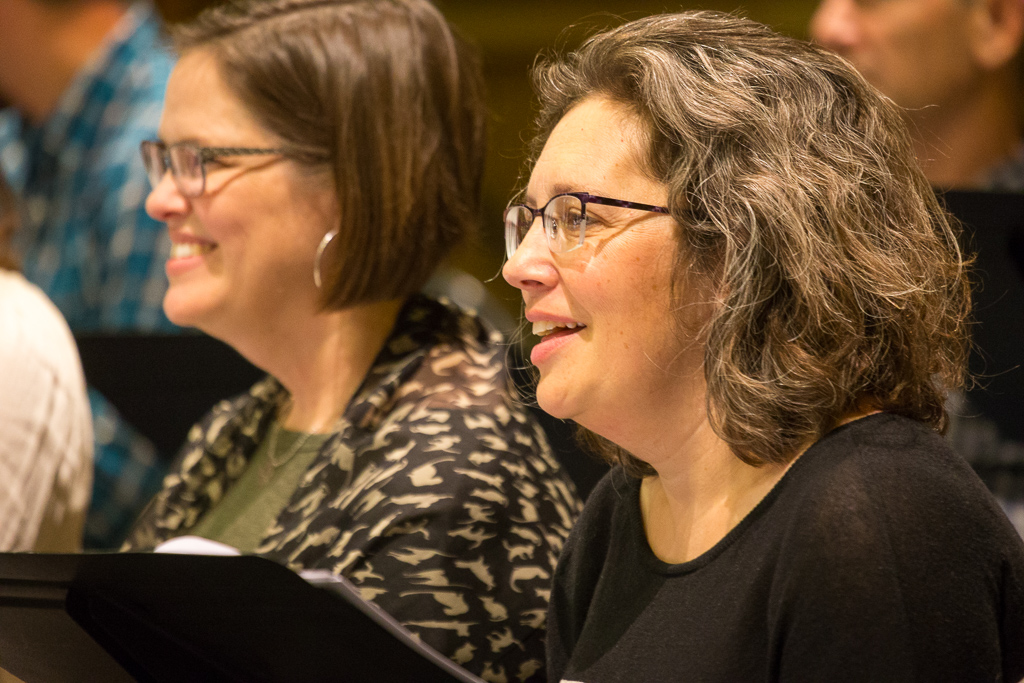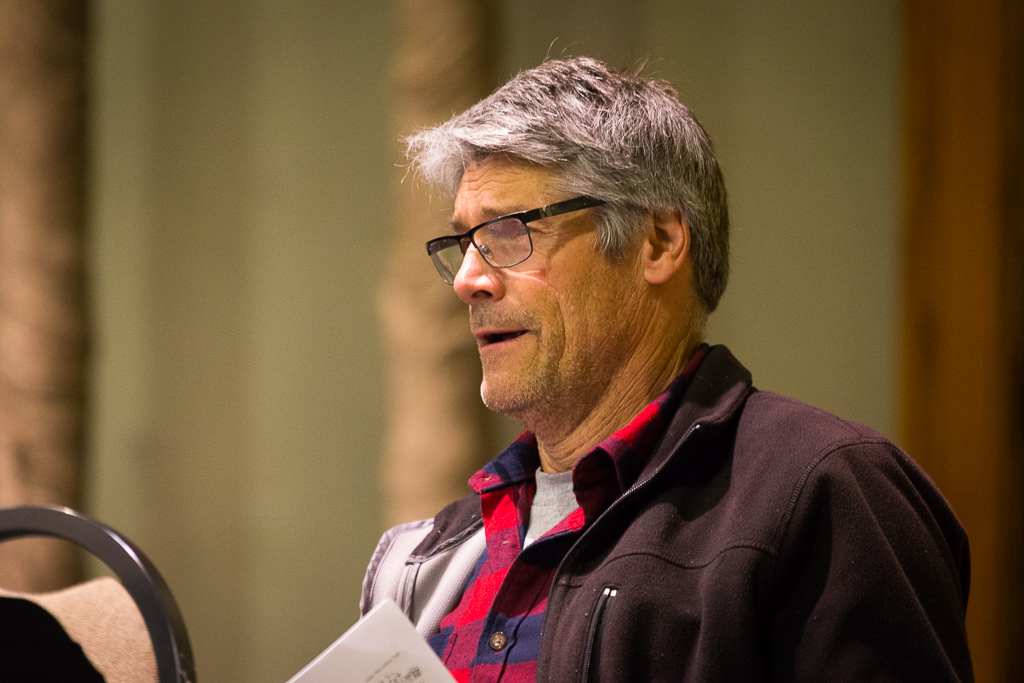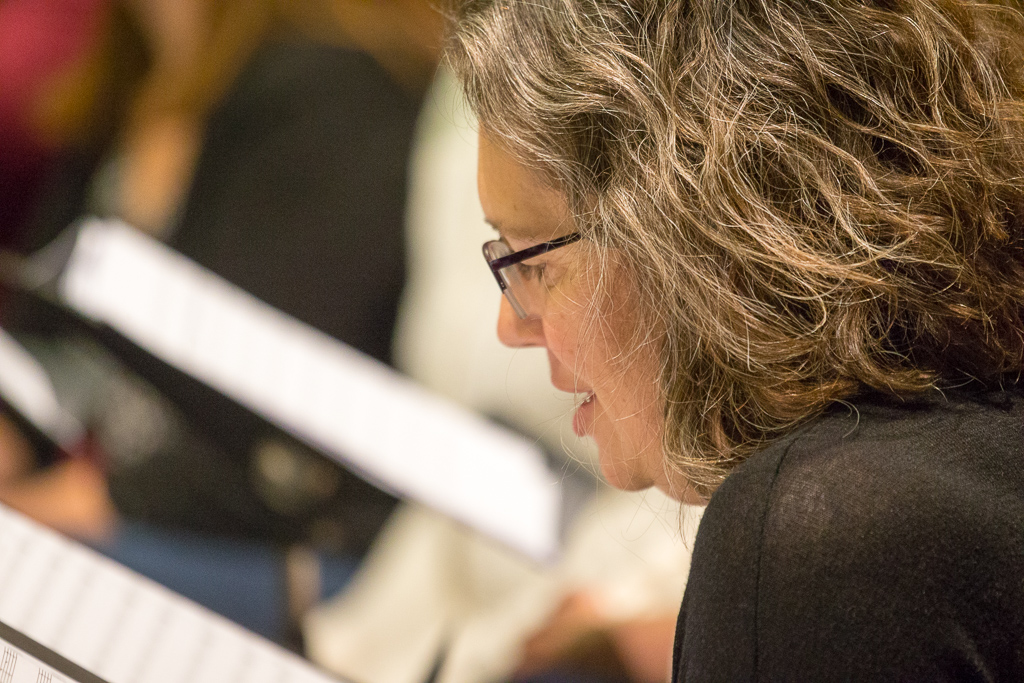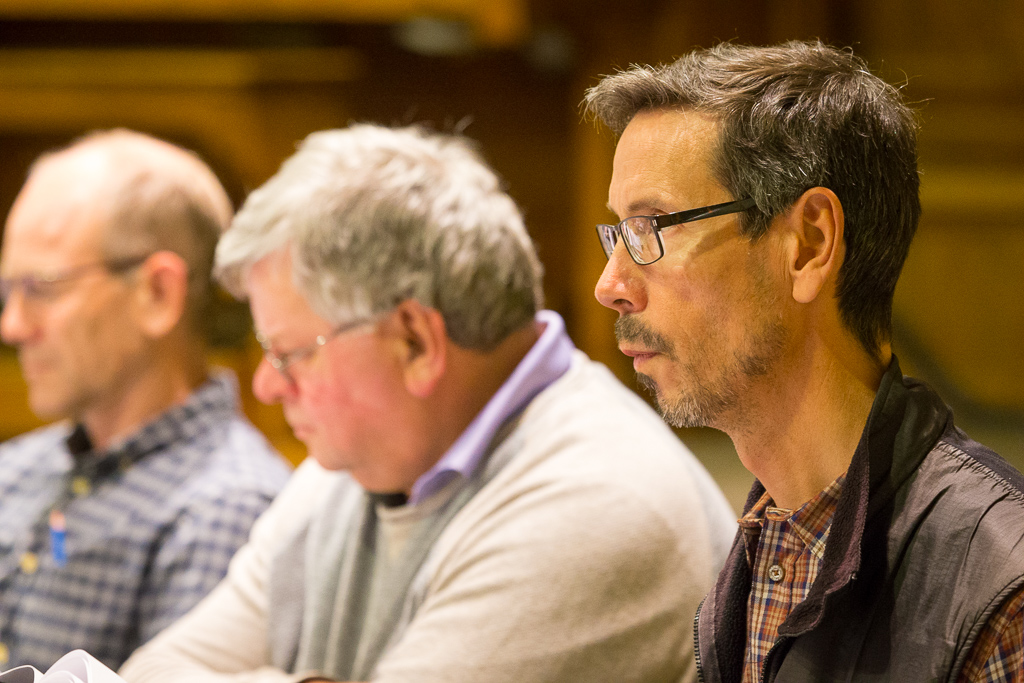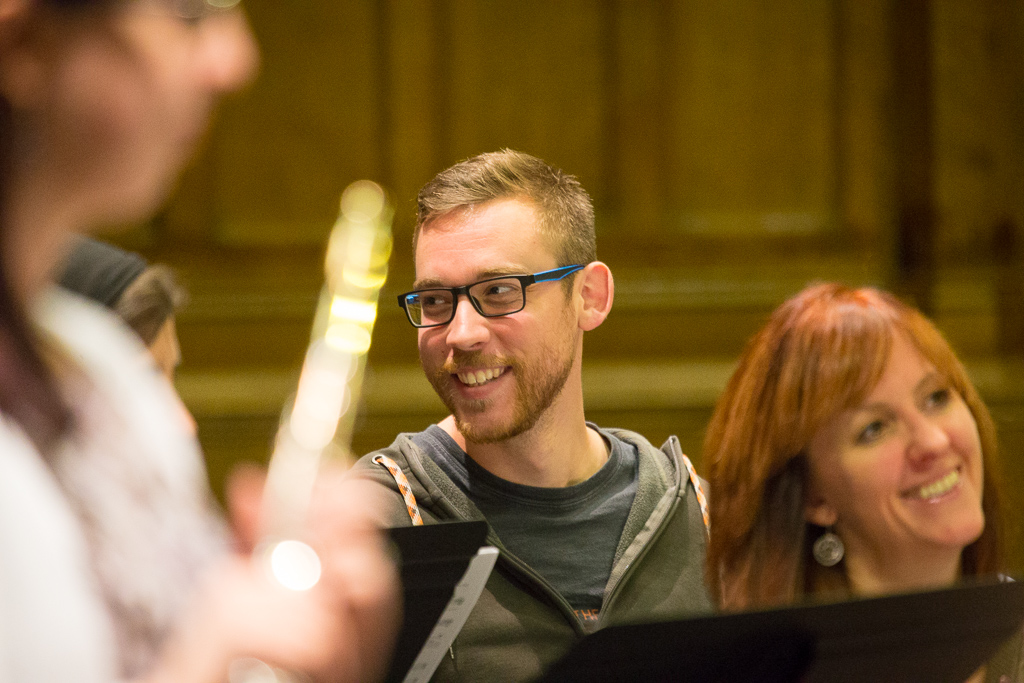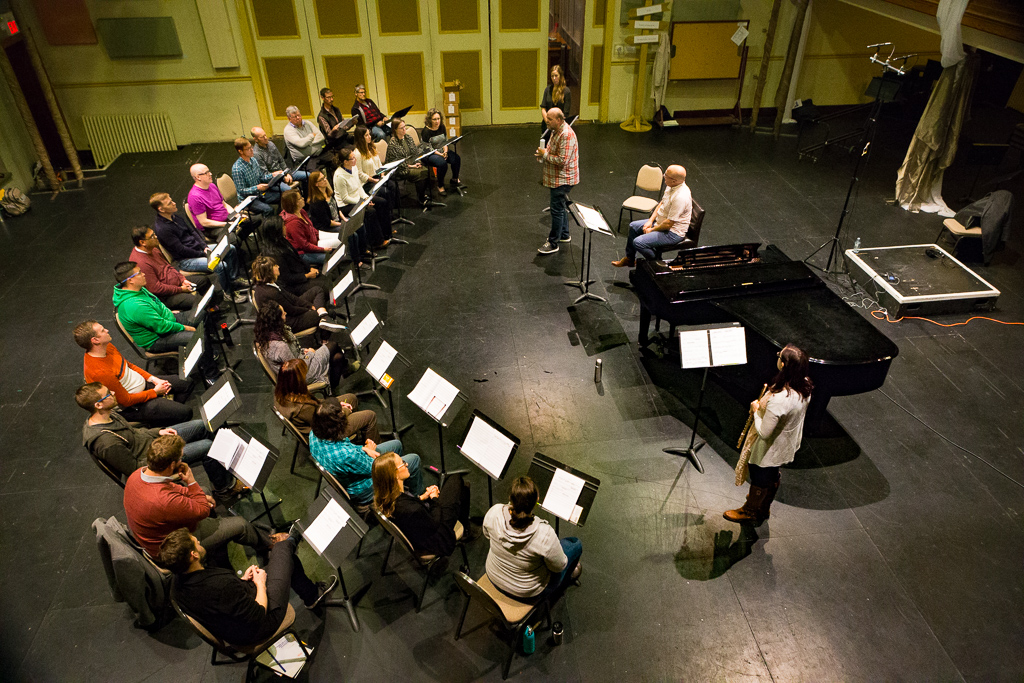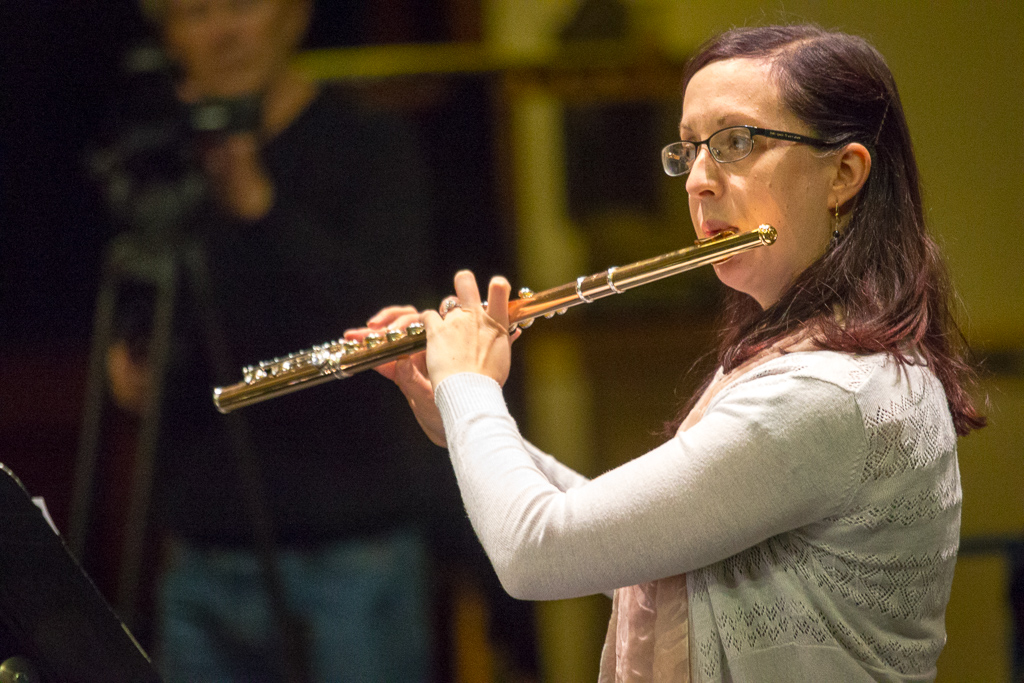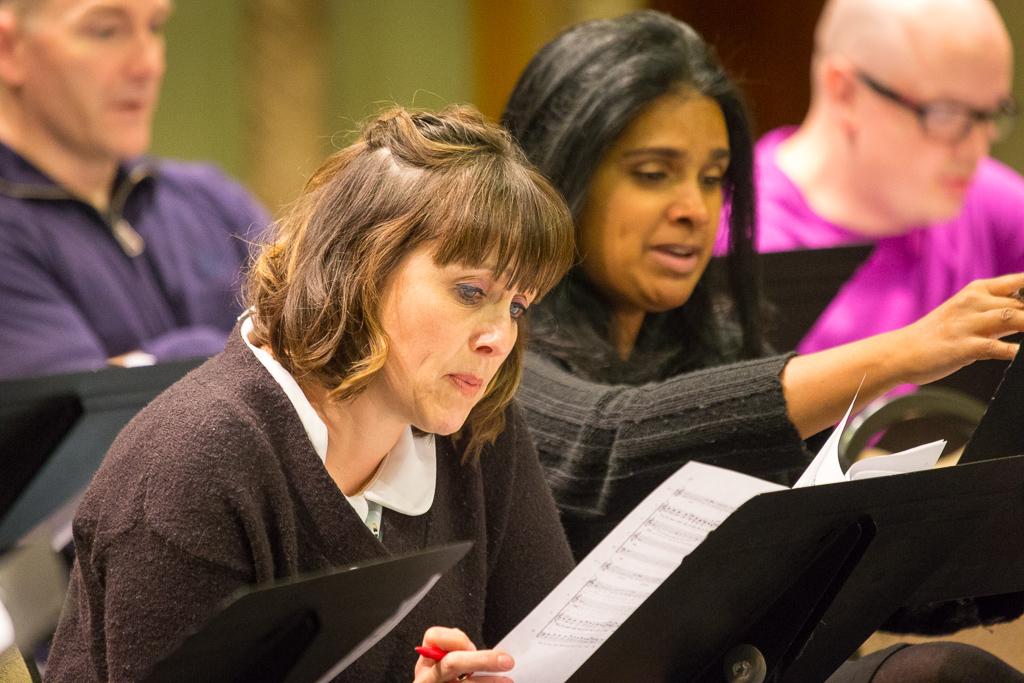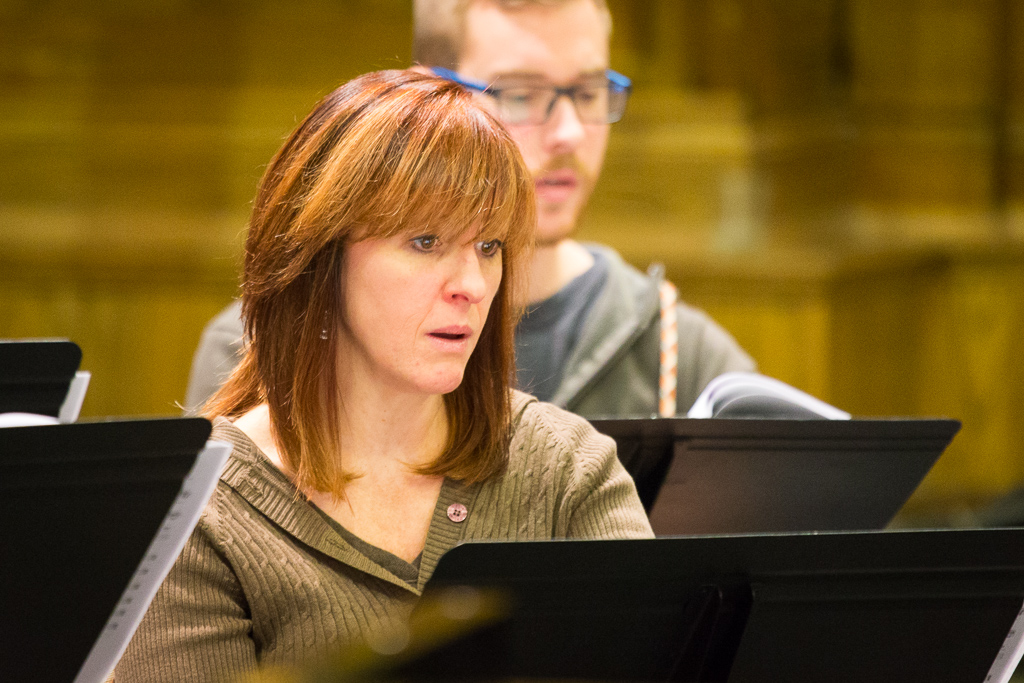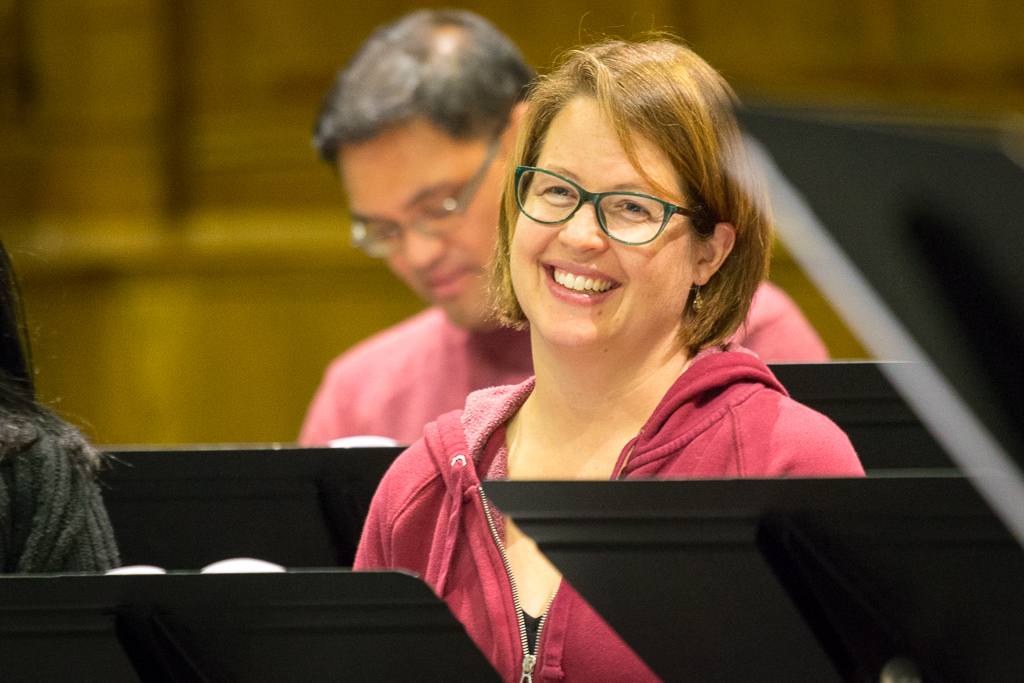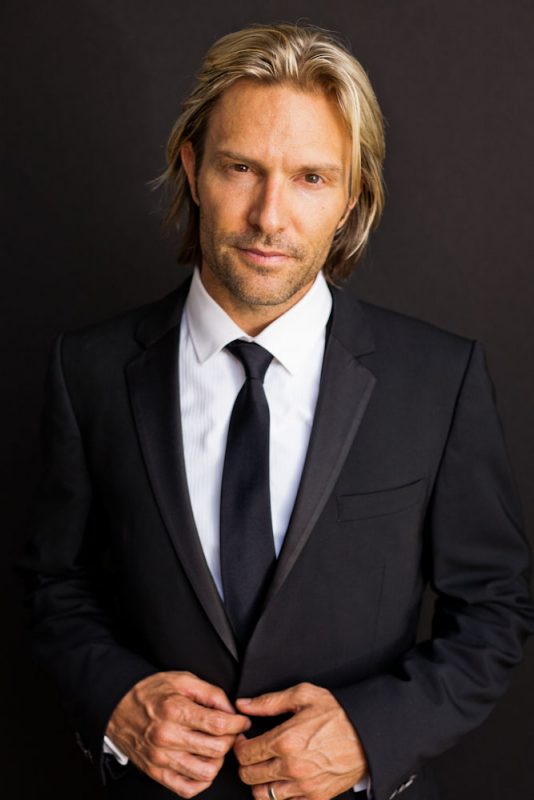
#LV BLOG ARCHIVE
A working session with Peter-Anthony Togni
We have pictures of our working session with Peter-Anthony Togni, Sara Hahn & Sarah Gieck as we put together Sea Dreams, a new Canadian work that we will premiere at Leap of Faith!
When composer Peter-Anthony Togni said he'd come to Calgary to work with us on his new work Sea Dreams, which Luminous Voices will premiere at Leap of Faith on Sunday 25 February, how could we say no? Thanks to Bandi Szakony for capturing our working session with Peter and flautists Sara Hahn & Sarah Gieck.
We're eager to share Sea Dreams with you! Come to a free, open rehearsal on Friday 23 February, where you can meet Peter himself! Or, reserve your tickets to Leap of Faith today!
Luminous Leap of Faith: Christina Jahn
Many of us have taken a leap of faith to share our life with that special someone. Soprano Christina Jahn shares her story about how she and her husband — fellow Luminary Paul Grindlay — approached the subject.
Many of us have taken a leap of faith to share our life with that special someone. Soprano Christina Jahn shares her story about how she and her husband — fellow Luminary Paul Grindlay — approached the subject.
Luminous Leap(s) of Faith
As we continue to count down toward Leap of Faith, for the next two weeks we will post videos of our choristers talking about instances in their lives when they took a leap of faith. We begin with soprano Julie Crouch -- and we are very glad she took her leap of faith!
As we continue to count down toward Leap of Faith, for the next two weeks we will post videos of our choristers talking about instances in their lives when they took a leap of faith. We begin with soprano Julie Crouch -- and we are very glad she took her leap of faith!
"The First Elegy" by Einojuhani Rautavaara
The last work of the first half for Leap of Faith is Die Erste Elegie by Finnish composer Einojuhani Rautavaara. While that name may not be as familiar as other contemporary choral composers such as Eric Whitacre, Bob Chilcott or Morten Lauridsen, Rautavaara (1928-2016) is a well-known name in choral circles.
The last work of the first half for Leap of Faith is Die Erste Elegie by Finnish composer Einojuhani Rautavaara. While Einojuhani Rautavaara may not be as familiar a name as other contemporary choral composers such as Eric Whitacre, Bob Chilcott or Morten Lauridsen, he is well known In choral circles. Rautavaara's Die Erste Elegie is based on the poetry of Rainer Maria Rilke (1875-1926), a Bohemian-Austrian, who the Poetry Foundation regards as 'one of the most lyrically intense German-language poets'. Make sure you reserve your tickets to hear Luminous Voices tackle this gorgeous work!
Einojuhani Rautavaara
(1928-2016)
About Einojuhani Rautavaara
Einojuhani Rautavaara was born in Helsinki in 1928. His father was an opera singer and cantor, and his mother was a doctor. Both of his parents died before he reached his 16th birthday, and he went to live with his aunt in a Helsinki suburb.
Rautavaara studied at the Sibelius Academy in Helsinki under Aarre Merikanto from 1948 to 1952. He first came to international attention when he won the Thor Johnson Contest for his composition A Requiem in Our Time in 1954; the work prompted Jean Sibelius to recommend him for a scholarship to study at the Juilliard School in New York City. At Juilliard, he was taught by Vincent Persichetti, and he also took lessons from Roger Sessions and Aaron Copland at Tanglewood. He graduated from the Sibelius Academy in 1957.
Rautavaara composed prolifically. His compositional output includes eight symphonies, 14 concertos, sonata for various instruments, string quartets and other chamber music, biographical operas, and numerous choral works. He wrote in a variety of forms of styles. Many of his works reflect his fascination with metaphysical and religious subjects and texts, including his Die Erste Elegie.
Rainer Maria Rilke
(1875-1926)
Rautavaara on Die Erste Elegie
Program notes translated into English by Andrew Bentley
My youthful encounter with the poetry of Rainer Maria Rilke turned out to be quite a discovery, not only in literary terms but also for the development of my world view. I still associate it strongly with the mysticism surrounding the ruins of post-war Vienna. It was there that I composed my Fünf Sonette an Orpheus, and two years later in Cologne I started writing the song cycle Die Liebenden to Rilke's texts. From that time onwards, I continued to carry with me - both mentally and in my suitcase - the Duino Elegies, Rilke's seminal work. Over the years I would take it out, finding myself particularly drawn to the first elegy, whose angel figure took on the role of a personal 'animus'. My orchestral works Angels and Visitations, Angel of Dusk and Playgrounds for Angels are all musical personifications of this figure.
Only as recently as 1993, however, when the international choral body 'Europa Cantat' wanted to commission a large-scale choral work from me, did I feel that the time had come to set of angel elegy. It had evidently matured in my subconscious in the interim, since the process of composing the work was swift, eager and fluently self-assured. The basic pitch material is derived from four triads which together form a twelve-note row. The way this material is applied, however, stands in considerable contrast to methods usually used for atonal music. In consequence, the tone of the work is mellow even at its most dramatic; poetic, yet expressive.
An Analysis by Timothy Shantz
How would you describe the compositional language of Einojuhani Rautavaara? What makes his Die Erste Elegie so interesting to program in a concert?
Timothy Shantz: Rautavaara's music is full of mysticism. He really knows how to write for the voice. His love of Rilke poems reveals his own existential questions.
The musical style of Die Erste Elegie sits somewhere between late Romanticism and the Serialism of Schoenberg. The music will be heard in a tonal way with plenty of pedal notes to provide harmonic context. Having sung this work many times I can say that the dramatic ascent of the final pages is unforgettable for both performer and audience!
The ingenuity of Leonardo da Vinci
Our preview of the repertoire for Leap of Faith continues with a look at Leonardo Dreams of His Flying Machine by Eric Whitacre, with a focus on the ingenuity of the celebrated Renaissance Man himself.
Another of the works on our Leap of Faith program is Leonardo Dreams of His Flying Machine by Eric Whitacre. But rather than focus on Whitacre, we thought we'd look a little bit into da Vinci himself. To hear Luminous Voices sing this fantastic work by Whitacre, be sure to arrange your tickets to Leap of Faith today!
Leonardo da Vinci
(1452-1519)
"The" Renaissance Man
Born in 1452 to a couple out of wedlock, Leonardo di ser Piero da Vinci would be regarded by historians and scholars as the prime exemplar of the so-called "Renaissance Man", an individual of "unquenchable curiosity" and "feverishly inventive imagination". He is widely considered one of the most diversely talented individuals ever to have lived. His body of work includes the fields of invention, architecture, science, music, mathematics, engineering, anatomy, geology, botany, writing, history, and cartography. Of course, he is also widely considered one of the greatest painters of all time.
Leonardo lived a full life, dying at the age of 67 in France.
A "Divine" Painter
By the 1490s, da Vinci had been heralded as a "Divine" painter. His technique is characterized by the following unique attributes:
- how he laid on the paint
- his detailed knowledge of anatomy, light, botany and geology
- the way humans register emotion in expression and gesture
- his use of subtle gradation of tone
Leonardo's paintings are among the most celebrated in history, including his Virgin of the Rocks (1483-86), The Last Supper (1495-98), and La Gioconda, also known as the Mona Lisa.
Anatomy and physiology
One of Leonardo's teachers, Andrea del Verrocchio, demanded his students develop a deep understanding and appreciation for human anatomy. As a successful artist, Leonardo was given permission to dissect human corpses hospitals in Florence, Milan, and Roman, which helped his understanding for this field of study.
Leonardo made more than 240 detailed drawings and wrote about 13,000 words towards a treatise on anatomy. His anatomical drawings include many studies of the human skeleton and its parts, and of muscles and sinews. He drew the heart and vascular system, the sex organs and other internal organs, making one of the first scientific drawings of a fetus in utero.
Leonardo also studied and drew the anatomy of many animals, dissecting cows, birds, monkeys, bears, and frogs, and comparing in his drawings their anatomical structure with that of humans. He also made a number of studies of horses. For much of his life, he was fascinated by the phenomenon of flight; he produced many studies on the subject, including Codex on the Flight of Birds (c. 1505), which begins by examining the flight behaviour of birds, and proposes mechanisms for flight by machines.
Engineer and Inventor
During his lifetime, Leonardo was valued as an engineer. When he fled to Venice in 1499, he worked as an engineer and devised a system of moveable barricades to protect the city from attack. He also had a scheme for diverting the flow of the Arno river. Leonardo's journals include a vast number of inventions, including a mechanical knight, hydraulic pumps, reversible crank mechanisms, finned mortar shells, and a steam cannon. He even had plans for several flying machines such as a flapping ornithopter and a machine with a helical rotor.
Of course, Leonardo also invented musical instruments, including the viola organista. It uses a friction belt to vibrate individual strings (similar to how a violin produces sounds), with the strings selected by pressing keys on a keyboard (similar to an organ). However, no extant instrument constructed directly from Leonardo's incomplete designs is known. In fact, many of Leonardo's ideas were well ahead of their time. During his lifetime, relatively few of his designs were feasible, let alone constructed, because the modern scientific approaches to metallurgy and engineering were only in their infancy during the Renaissance.
Eric Whitacre on Leonardo Dreams of His Flying Machine
(Source: EricWhitacre.com)
Eric Whitacre
(b. 1970)
Charles Anthony Silvestri is not only a brilliant poet, teacher and historian, he is a consummate choral singer blessed with a beautiful tenor voice. When Dr. Gene Brooks called and asked me to write the 2001 Raymond C. Brock Commission, I could think of no other author whose words I would rather set.
We started with a simple concept: what would it sound like if Leonardo Da Vinci were dreaming? And more specifically, what kind of music would fill the mind of such a genius? The drama would tell the story of Leonardo being tormented by the calling of the air, tortured to such degree that his only recourse was to solve the riddle and figure out how to fly.
We approached the piece as if we were writing an opera brève. Charles (Tony to his friends) would supply me with draft after draft of revised ‘libretti’, and I in turn would show him the musical fragments I had written. Tony would then begin to mold the texts into beautiful phrases and gestures as if he were a Renaissance poet, and I constantly refined my music to match the ancient, elegant style of his words. I think in the end we achieved a fascinating balance, an exotic hybrid of old and new.
Watch composer Eric Whitacre conduct the VocalEssence Ensemble Singers in a performance of Leonardo Dreams of His Flying Machine on March 22, 2009 in Minneapolis, USA.
